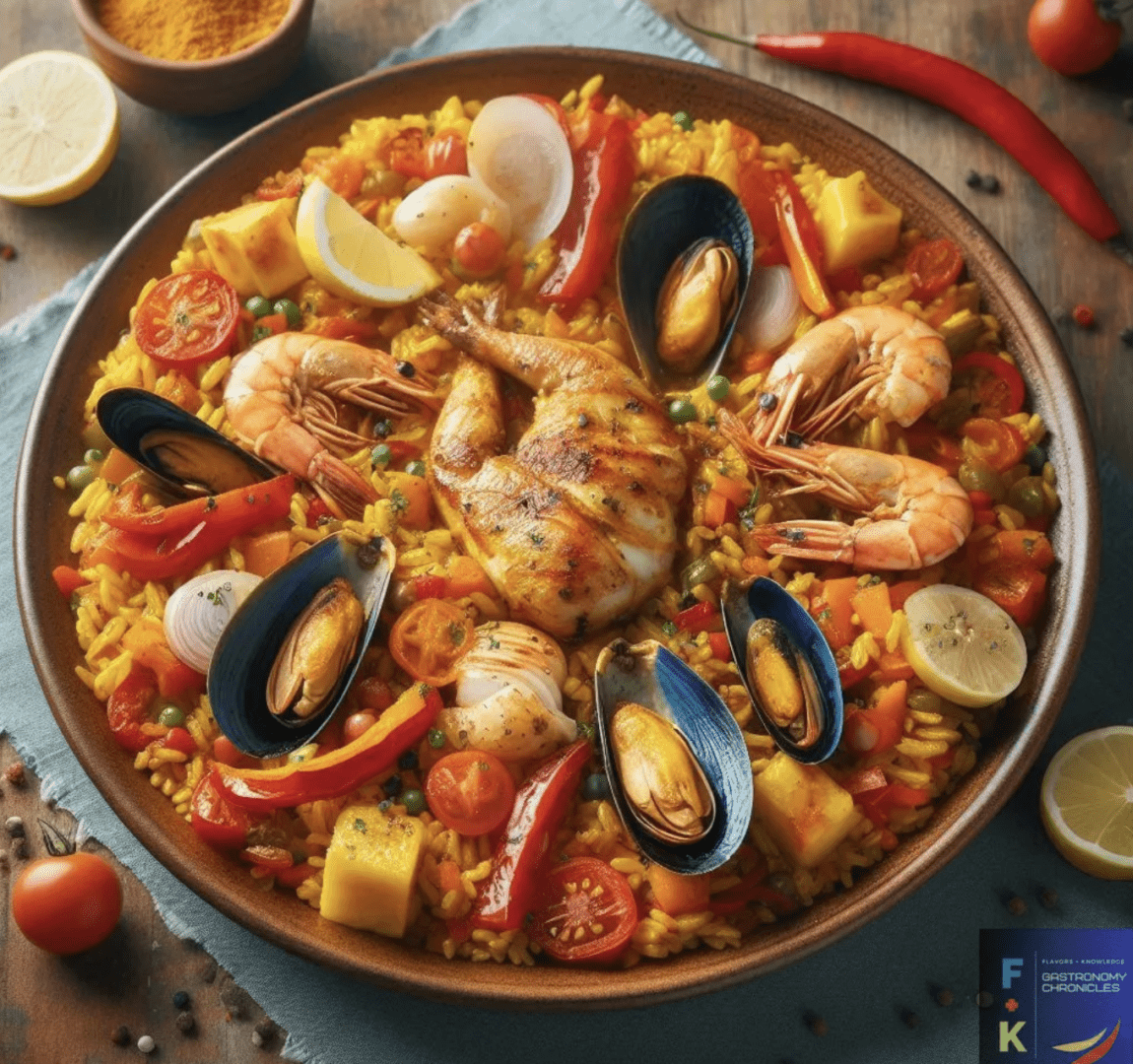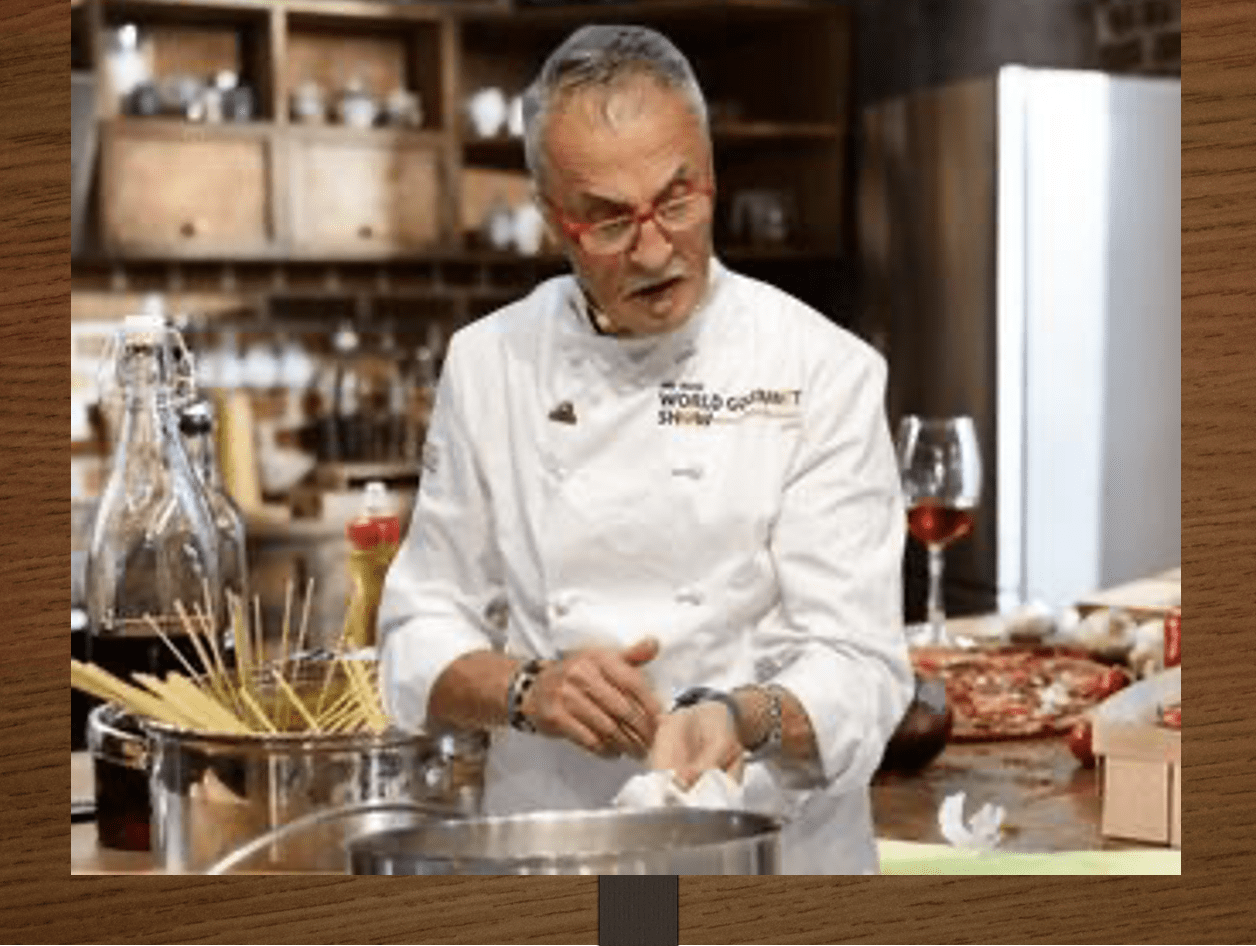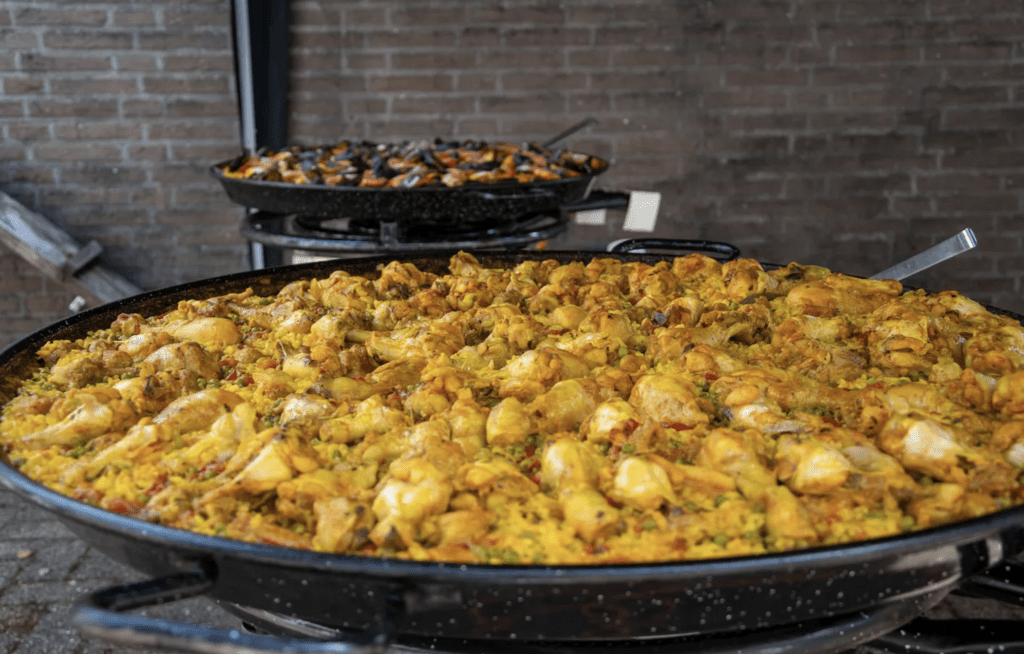Search Posts
Recent Posts
- Out and About in RI: Former Pawtucket Mayor Henry Kinch Tribute in Photos June 24, 2025
- Rhode Island Weather Forecast for January 24, 2025 – Jack Donnelly June 24, 2025
- ART! Mark Freedman, first featured artist of Summer Art Shows at Charlestown Gallery June 24, 2025
- The Bellevue Hotel: Procaccianti Co. New Luxury Boutique Hotel Set for Newport’s Iconic Bellevue Ave June 24, 2025
- Mike Stenhouse, CEO of RI Center for Freedom & Prosperity, named into College Baseball Hall of Fame June 24, 2025
Categories
Subscribe!
Thanks for subscribing! Please check your email for further instructions.

Ask Chef Walter: Paella Perfecta, with Chef Walter Potenza
Paella Perfecta.
History, styles and the common mistakes to avoid, including some kitchen secrets and a recipe from Spain.
Friends:
Paella- the very sound of the word evokes a vision of the scorching coasts of Spain, the cacophony of street markets, and the aroma wafting of that savory, saffron-scented steam. This iconic creation from Valencia is perhaps Spain’s most characteristic dish, and perfecting the art could be as perilous as that dance known as flamenco. Today, let’s take a gastronomic ride toward unraveling history, varieties, and ‘don’ts’ while making paella so that your effort brings perfection and not disappointment. I have also included a lovely recipe for you to tackle.
A Glimpse into Paella’s Origins
Originating in the rice fields of Valencia, farmers made this over open fires. The first recipes comprised rice and whatever the land yielded: snails, beans, rabbits, and local vegetables. During the 19th century, the humble creation had already crossed over its rural origin and became an icon of Spanish pride, a symbol of its gastronomic prowess. It is eaten and celebrated because it’s that simple: shared in company and flavored with color and many flavors. This rich history and tradition make paella more than just a dish; it’s a cultural symbol that connects us to the heart of Spain.
Most Sundays and holidays in Spain are when family and friends get together, and paella is shared and prepared over an open fire for large gatherings or in great stovetop pans. Its preparation is an equally important part of this food as the consumption itself, making it a social ritual where everybody has something to do right from cutting, seasoning, and selecting to stirring.
In Valencia, the birthplace of paella, festivals and competitions are held around this dish, elevating comfortable cooking to a kind of art and pride for the region. Every spoonful says something about the Spanish spirit of comradeship, welcome of guests, and frank respect for the fruits of nature. It has even become a representative of Spanish culture and cuisine outside the country’s borders. It appears in practically every international event in which the riches of Spanish foods are exhibited.
So, one can often hear: “La paella no se come, se comparte” (Paella isn’t eaten, it’s shared), which underlines its vast role in the connection between people.
The Three Faces of Paella
To be clear, let’s start with the fact that paella is not homogeneous. Due to ingredients and tradition, it is prepared differently in each area of Spain. This variety adds excitement and intrigue to the dish, inviting you to explore the different flavors and textures of each region’s unique paella.
The first one out of the gate is – Paella Valenciana
It is the original and most classic version, with rabbit, chicken, snails, green beans-garrofó, tomatoes, and rosemary. No fishy stuff here-follow the letter!
Paella de Mariscos-Squid and Seafood
This decadent version, full of shrimp, mussels, squid, and sometimes even lobster, is favored in coastal areas. Without any meat, it allows the ocean’s bounty to shine.
Mixed Paella
Perhaps the purist will scoff at the combination of meats and seafood. However, it is for varied tastes since it puts land and sea in one aromatic pan. (AI Image above)
Through the years,we have held many classes on paella in ourcooking schoolhere in Cranston, Rhode Island. After many successes and errors, I suggest some pitfalls to avoid if you make the paella at home. Perfect paella is more than just the right recipe; it’s all about balancing ingredients, tradition, timing, and technique.
Choosing the Wrong Rice
The soul of any paella is in the leading actor, the rice, and slightly less the topping. Bomba and Calasparra are the ideal varietals because they are super receptive and likely to absorb three times their volume while remaining consistent in texture. Bomba rice, in particular, is so robust that each grain is like an explosion of flavor. Never, ever rinse it-starch means creaminess. Long grain rice? Sacrilege!
Bomba Rice: This type of rice is easy to spot due to its unique physical traits. The grains are round and short, measuring about 5 mm in length and 2 mm in width. Their distinctive pearly appearance makes them stand out among other varieties. It also has quite a long cooking time, usually between 15 and 20 minutes.
Calasparra Rice is a unique, centuries-old short-grain rice with a leisurely maturing process—30% slower than other kinds of rice. Calasparra rice is grown in cold water, meaning it takes much longer to mature. The result is a much more complex, dehydrated rice that can absorb much more broth and stay al dente. This longer growing cycle produces kernels that are exceptionally dehydrated, ready to absorb even more of the tasty sauces and flavors of paella broth and other Mediterranean recipes.
Calasparra is a spectacular rice-growing region where cool mountain water floods fields using a system created by the Romans.
Both rice varietals are available online through Spanish importing companies like Tienda and others.
Overload with ingredients
Less is more. Paella is not a kitchen sink dish. Overloading masks the flavors of everything; deal with a few good ingredients. Please keep it simple and evaluate the personality of the ingredients you use.
Skirting the Sofrito. This aromatic base of tomatoes, garlic, and onions lends depth. Hurrying over this or omitting it altogether is to steal from your paella’s soul.
Overmixing
Unlike with Italian risotto, paella is not stirred at all. The odd nudge is acceptable, but constant agitation forbids the formation of that coveted socarrat, which is that crispy bottom layer.
Abuse of Heat
Traditionally, the paella is always prepared over an open flame. If it is prepared on a stovetop, evenly spread the heat. Avoid constant temperature changes; inconsistency is a recipe for disaster.
Disregard the Socarrat. The hallmark of a good paella is a crispy, caramelized crust on the bottom. When the liquid has been primarily absorbed, crank the heat briefly, but just for a moment, and listen for a soft crackling. The word socarrat in Valencian means scorched, and although it may seem strange, it’s a cooking technique used when making paella. There is no good Valencian paella without a good socarrat, and the burnt rice remains at the bottom when you cook it.
Traditional Paella Valenciana Recipe with Bomba Rice
Ingredients for 4-6
Rice: 2 cups Bomba rice (or another short-grain rice)
Five cups of chicken or vegetable stock
One pound of chicken cut into pieces and one pound of rabbit
One cup of green beans
1/2 cup of garrofo beans or sizeable white lima beans
1/2 red pepper sliced for garnish
1/2 teaspoon of saffron threads, soaked in two tablespoons of warm water
Two teaspoons of Spanish paprika
Sea salt to taste
1/4 cup of extra virgin olive oil
Two grated tomatoes
One sprig of rosemary
Lemon wedges for serving
Directions
Prepare the Pan: Use a wide, shallow paella pan (about 15-18 inches). Heat the olive oil over medium heat.
Cook the Meat: Brown the chicken and rabbit pieces in the oil, turning occasionally, until golden brown (about 10-15 minutes). Season with salt.
Add Vegetables: Add the green beans and sauté for 5-7 minutes until slightly tender.
Build the Base: Stir in the grated tomatoes and cook until the mixture thickens and reduces (about 5 minutes). Sprinkle the paprika evenly and mix quickly to avoid burning.
Add Stock: Pour in the stock, saffron with its soaking liquid, and rosemary sprig. Bring to a gentle boil. Adjust salt if needed.
Incorporate Rice: Evenly distribute the Bomba rice in the pan without stirring further. The rice should remain level across the surface.
Cook the Paella: Maintain a steady simmer over medium heat for the first 10 minutes, then lower the heat for another 8-10 minutes. Do not stir during this time. Allow the stock to be reduced and absorbed into the rice. A crust, known as socarrat, will form at the bottom, adding a desirable texture.
Rest and Garnish: Remove from heat and cover loosely with aluminum foil or a clean kitchen towel. Let the paella rest for 5-10 minutes. Garnish with red bell pepper slices (if using) and lemon wedges. Enjoy directly from the pan for an authentic experience.
Tips:
Authentic paella is never stirred after the rice is added, ensuring distinct grains and the development of socarrat. Avoid substituting long-grain rice; Bomba rice absorbs liquid without becoming mushy. Traditional Paella Valenciana does not include seafood or chorizo. Staying true to its roots ensures respect for Valencia’s original flavors.
Putting It All Together. Cooking paella is not cooking but an experience. From the freshness to the art of holding back, it screams the grand, rich cultural tapestry that is Spain. Let every mistake be a step toward perfecting your version of this eternal dish. With a glass of sangria, call your friends over and let the journey toward perfection begin. ¡Buen provecho!
Chef Walters Culinary Tourism Tours Fall 2026

___
Chef Walter is featured HERE every Sunday with his regular Ask Chef Walter columnn!

Meet Chef Walter!
There is a constant, recognizable thread in the career of Walter Potenza to elevate the level of Italian culinary culture in the United States. Besides his unquestionable culinary talent and winning business perspective, Chef Walter has been a relentless educator with passion and knowledge who defeats stereotypes. His life, career, and values are a model, an example to follow by any chef of Italian gastronomy working outside Italy.
Chef Walter appears regularly on National and International Networks such as Food Network, ABC, CBS, NBC, RAI, FOX, and Publications such as NY. Times, Washington Post, Wall Street Journal, Food & Wine, Saveur, Gourmet, and several Italian media outlets. And now – RINewsToday!

